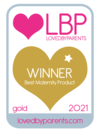Disposable breast pads: main features
Breast pads for day and night
Suitable for day and night and are an effective protection against milk leakage during breastfeeding, thanks to the special 3D slim structure which guarantees super-absorbent power in just 1 mm of thickness.
The alveolar surface, in fact, does not allow liquids to pass from one cell to another, thus increasing the absorbency in every centimetre.
They are the ideal all day wear solution to wear with even the skinniest of clothes and are super safe for night time.
Individually packed
They are individually packaged to ensure maximum hygiene, extremely practical to keep in your bag just in case outside the home.
Frequently Asked Questions
Is it better to use disposable nursing pads or washable nursing pads?
Using disposable breast pads for milk leaks is more hygienic than using washable pads; in fact, although they can be rinsed well, they risk retaining detergent residues between the fibers in contact with the nipple which then enters the newborn's mouth when it is breastfed.
How often should pads be changed while breastfeeding?
The nursing pads should be changed whenever there is an unpleasant "wet" sensation around the nipple. Keeping the nipple and areola dry is a good hygienic rule to avoid irritation and avoid the risk of fissures.
What is the difference between daytime nursing pads and night nursing pads?
The difference between daytime nursing pads and nighttime nursing pads usually lies in the thickness.
The nursing pads for the night are thicker, suitable for absorbing more milk losses between one feeding and the other, the times of which can be more dilated during the night than during the day. In addition to what during sleep, turning on one side, a breast can be compressed and therefore lose more milk.
There are disposable breast pads on the market, comfortable and super thin suitable for both day and night; they are manufactured with a superior honeycomb weave with special super absorbent layers and able to face any leak even the most abundant
How do you clean your nipples before and after breastfeeding?
Before breastfeeding, you must first wash your hands well with warm water and soap, rinsing them well and then move on to cleaning the nipples and areola that will come into contact with the infant's mouth. The most natural method is to use boiled water and sterile gauze starting from the nipple towards the areola.
After feeding it is important to let the breast dry in the air or dab it with gauze without rubbing and it is then possible to cover the nipples with breathable breast pads to change when they become too wet.










